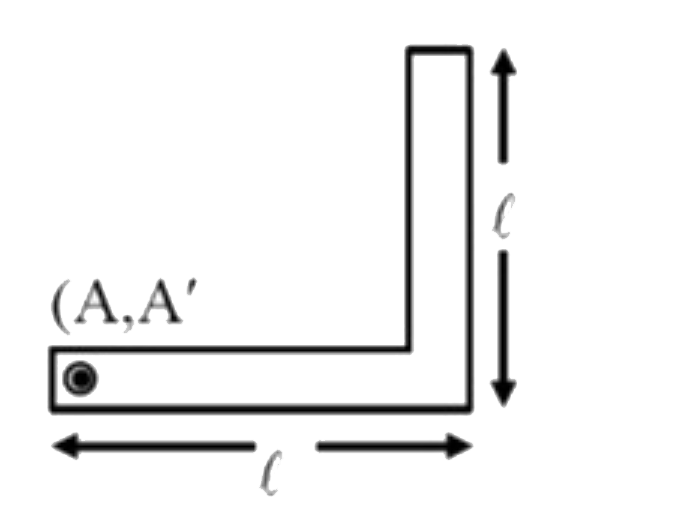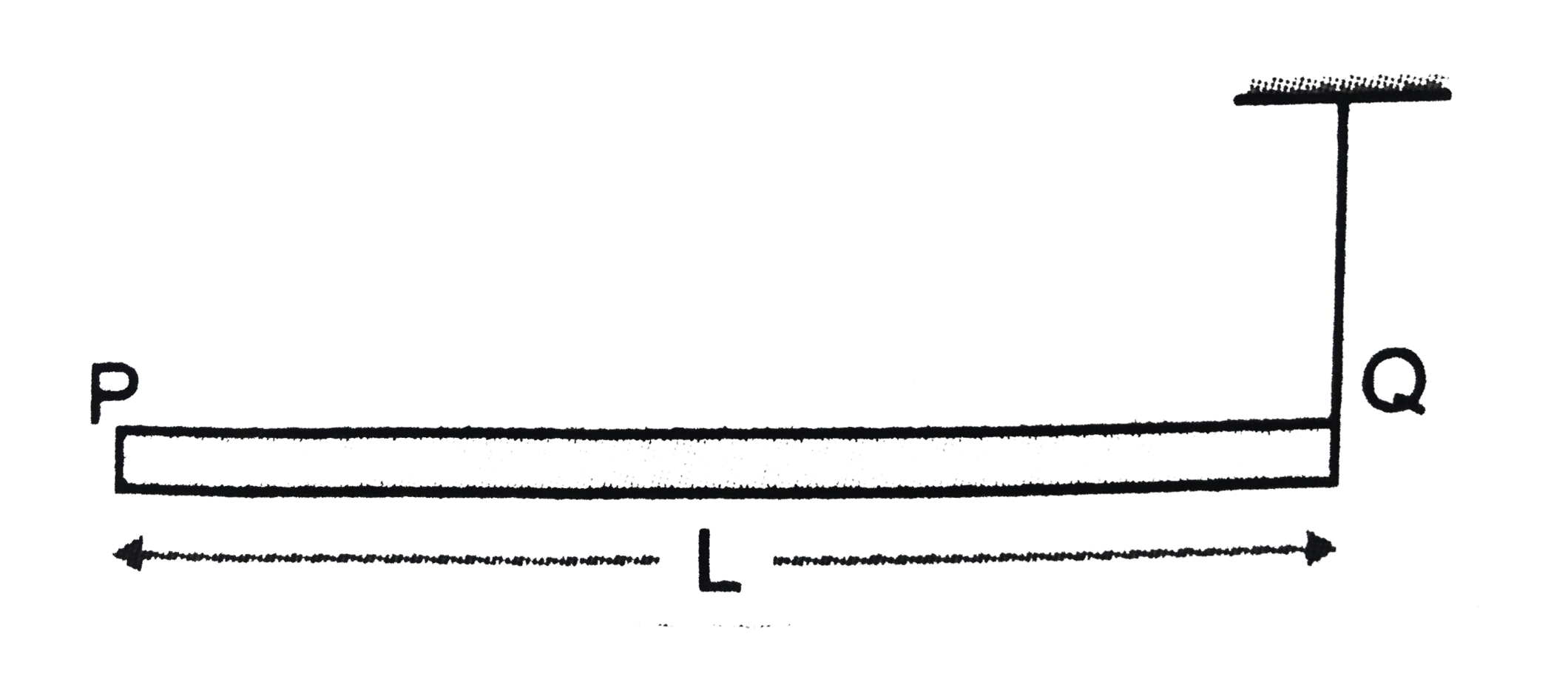Two rod 1 and 2 are released from rest as shown in figure . Given, l1=4l,m1=2m,l2=2land m2=m. There is no friction between the two rods . If α be the angular acceleration of rod 1 just after the rods are released . Then,
What is the initial angular acceleration of rod 2 in terms of the given parameters in the question ?

[2√3g2l+2√3α]
[3√3gl−√3α]
[6√3g8l+5√3α]
[3√3g8l−8√3α]
The correct Answer is:D
Step by step video, text & image solution for Two rod 1 and 2 are released from rest as shown in figure . Given, l_(1)=4l,m_(1)=2m,l_(2)=2l "and "m_(2)=m. There is no friction between the two rods . If alpha be the angular acceleration of rod 1 just after the rods are released . Then, What is the initial angular acceleration of rod 2 in terms of the given parameters in the question ? by Physics experts to help you in doubts & scoring excellent marks in Class 11 exams.
Updated on:21/07/2023Topper's Solved these Questions
- ROTATIONAL MOTIONBook:DC PANDEYChapter:ROTATIONAL MOTIONExercise:Matrix Matching Type Questions
Explore 17 Videos
- ROTATIONAL MOTIONBook:DC PANDEYChapter:ROTATIONAL MOTIONExercise:Integer Type Questions
Explore 17 Videos
- ROTATIONAL MOTIONBook:DC PANDEYChapter:ROTATIONAL MOTIONExercise:More than one option is correct
Explore 36 Videos
- ROTATIONAL MECHANICSBook:DC PANDEYChapter:ROTATIONAL MECHANICSExercise:Subjective Questions
Explore 2 Videos
- SEMICONDUCTORS AND ELECTRONIC DEVICESBook:DC PANDEYChapter:SEMICONDUCTORS AND ELECTRONIC DEVICESExercise:More than One Option is Correct
Explore 3 Videos
Similar Questions
A L shaped rod of mass M is free to rotate in a vertical plane about axis A A as shown in figure. Maximum angular acceleration of rod is

View SolutionThe thin rod shown below has mases M and length L. A force F acts at one end as shown and the rod is free to rotate about the other end in horizontal plane. Initial angular acceleration of the rod is :

View Solution
Knowledge Check
Two rod 1 and 2 are released from rest as shown in figure . Given, l1=4l,m1=2m,l2=2land m2=m. There is no friction between the two rods . If α be the angular acceleration of rod 1 just after the rods are released . Then,
What is the normal reaction between the two rods at this instant ?
 A16√3m/αB4m/α√3C32m/α3√3D12√3)m/α
A16√3m/αB4m/α√3C32m/α3√3D12√3)m/αTwo rod 1 and 2 are released from rest as shown in figure . Given, l1=4l,m1=2m,l2=2land m2=m. There is no friction between the two rods . If α be the angular acceleration of rod 1 just after the rods are released . Then,
What is the horizontal force on rod 1 by hinge. A at this instant ?
 A(32−12√33√3m/αB(16−2√3√3m/αC(14+2√3)m/αD√3m/α
A(32−12√33√3m/αB(16−2√3√3m/αC(14+2√3)m/αD√3m/αA uniform rod of length l is released from the position shown in the figure. The acceleration due to gravity is g. There is no friction at any surface. Find the initial angular acceleration of the rod.
 A3√3g10lB5√3g7lC3√3g11lD5√3g19l
A3√3g10lB5√3g7lC3√3g11lD5√3g19l
A uniform rod of length L and mass M is free to rotate about a frictionless pivot at one end. The rod is released from rest in the horizontal position. What are the initial angular acceleration of the rod and the initial linear acceleration of the right end of the Rod ?

View SolutionA ligh rod of length 1 m is pivoted at its centre and two masses of 5 kg and 2 kg are hung from the ends as shown in the figure. Find the initial angular acceleration of the rod assuming that it was horizontal in the beginning.

View SolutionA rod PQ of mass M and length L is hinged at end P. The rod is kept horizontal by a masseless string tied to point Q as shown in Fig. When string is cut, the initial angular acceleration of the rod is :

View SolutionA uniform rod of length l and mass M pivoted about its end as shown in Fig. and is free to rotate in the vertical plane about the pivot. The rod is released from rest in the horizontal position.
(a) What is the initial angular acceleration of the rod?

(b) Find the initial acceleration of the right end of the rod?
( c) Find normal contact force due to hinge when rod has rotated through angle θ as shown in Fig.
View SolutionA uniform rod of mass 20 Kg and length 1.6 m is piovted at its end and swings freely in the vertical plane. Angular acceleration of the rod just after the rod is relased from rest in the horizontal position is

View Solution

